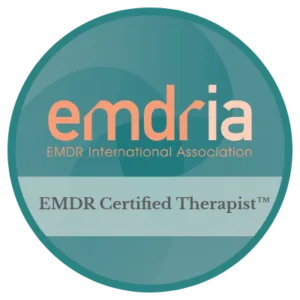Ketamine-assisted group therapy, with the support of a trained therapist, offers a unique approach to mental health treatment, combining the benefits of ketamine with the power of group dynamics. While ketamine-assisted individual therapy often involves one-on-one sessions with a therapist, this innovative method brings patients together in a supportive environment to navigate their healing journey collectively. The contrast between individual introspection and shared experiences can lead to profound breakthroughs and deeper connections with others facing similar struggles.
“The transformations I’ve observed in my clients since collaborating with ketamine assisted group therapy have been nothing short of remarkable. Improved nervous system regulation, decreased defense mechanisms, and a pervasive increase in tranquility and joy” says Sharon Burgamy, LPC.
Key Takeaways
- Embrace the Healing Potential: Actively consider ketamine-assisted group therapy as a complementary approach to traditional therapy for mental health conditions.
- Leverage Group Dynamics: Engage in group settings to foster a sense of community, shared experiences, and mutual support during the therapeutic journey.
- Prioritize Safety Measures: Ensure that therapy sessions for patients are conducted in a controlled environment with proper supervision to maximize the benefits and minimize risks.
- Reflect on Shared Insights: Encourage open communication and vulnerability within the group of people to facilitate profound revelations and personal growth.
- Integrate Individual and Group Therapy: Combine individual therapy with group sessions to enhance overall progress and well-being in a holistic manner.
- Stay Open to Transformation: Remain receptive to the transformative power of group therapy, allowing for deep introspection and positive changes to unfold organically.
The Ketamine Group Therapy Journey
Eligibility Process
Individuals seeking ketamine administration in a group therapy setting must undergo a thorough screening process. This typically involves an initial consultation with a healthcare provider to assess the individual’s mental health history and current condition. Medical evaluation is essential to determine if ketamine therapy is suitable based on the individual’s needs and medical background.
Importance of Medical Evaluation
Before embarking on the ketamine therapy journey, a comprehensive medical evaluation is crucial. This evaluation helps healthcare providers understand the individual’s overall health status, any existing medical conditions, and medications being taken. It also allows for the identification of any potential risks or contraindications that may impact the effectiveness or safety of ketamine therapy.
The eligibility process for ketamine administration involves gathering detailed information about the individual’s mental health history, current symptoms, and treatment goals. This information helps healthcare providers determine if ketamine therapy is appropriate and safe for the individual. Obtaining a comprehensive medical evaluation before starting ketamine therapy is essential to ensure that any underlying medical issues are addressed and managed effectively.
Step-by-Step Group Therapy Process
The significance of set and setting in KAP cannot be overstated, as they greatly impact the therapeutic journey. Set pertains to an individual’s mindset and intentions before the ketamine session, including their relationship with the therapist.
Setting refers to the physical environment where the therapy occurs, emphasizing safety and comfort to encourage introspection. Establishing a secure and inviting environment is key to maximizing the effectiveness of Group KAP. A safe, welcoming ambiance with soft lighting, cozy seating, and calming music fosters relaxation and openness during sessions. Emotional support from trained therapists builds trust and aids in the healing process.
Preparation group sessions precede ketamine dosing sessions, allowing group members to discuss goals, concerns, and mental readiness for the experience. Therapists collaborate closely with each client to build rapport, address past traumas, and tailor therapy to the group’s needs. Setting intentions before the journey lays the groundwork for a successful ketamine-assisted experience.
The dosing group sessions involve supervised administration of ketamine based on factors like weight and desired outcomes. Clients often enter altered states of consciousness, facilitating the exploration of emotions and memories. After the ketamine journey, therapists guide individuals through reflecting on the experience, promoting insight into thought patterns and emotional healing.
Integration group sessions follow dosing, capitalizing on the neuroplasticity induced by ketamine. Clients reflect on insights gained during therapy, with therapists aiding in translating revelations into actionable steps for personal growth. By solidifying positive changes and developing coping strategies, integration sessions help individuals apply newfound awareness to daily life challenges.
Group Session | Focus of group |
|---|---|
| Intention Group | Group members meet each other. The therapist provides information on KAP group process. Group members explore and reflect on their intentions for the ketamine journey. |
| Dosing Session | Group members explore their intentions during calming exercises. Ketamine’s journey starts. After members explore insights and experiences with the group. |
| Integration Session | Group members share, reflect, and integrate the experience. |
Advantages of a Group Setting
Feeling Supported
Group setting in ketamine-assisted therapy provides a sense of belonging and understanding. Participants often feel supported by sharing their struggles with others facing similar challenges. “KAP groups offer an incredible avenue for harnessing the power of this medicine to foster community support, cultivate shared positive experiences, and deepen connections while nurturing compassion.” says Burgamy The emotional connection formed within the group creates a safe space for individuals to express themselves freely. This mutual support can lead to enhanced healing and self-discovery.
Cost-Effectiveness
Engaging in group ketamine therapy is often more cost-effective than individual sessions. Sharing the therapeutic experience with others allows for reduced expenses per participant, making it a financially viable option for many.
The cost-effectiveness of group settings enables more individuals to access the benefits of ketamine therapy without financial constraints. This affordability promotes inclusivity and broadens the reach of mental health support services.
Shared Experiences
In a group setting, participants have the opportunity to witness and learn from each other’s journeys. The shared experiences foster a sense of community and understanding among individuals undergoing ketamine-assisted therapy.
Safety and Control Measures
Monitoring Individuals
During ketamine assisted group therapy, it is crucial to implement stringent safety protocols to ensure the well-being of all participants. One key aspect is the continuous monitoring of individuals throughout the therapy session. This involves closely observing their body language and responses to the medication.
Maintaining a vigilant eye on each participant allows therapists to promptly address any potential risks or adverse reactions that may arise during the session. By closely monitoring individuals, therapists can provide necessary support based on each person’s unique needs. This proactive approach enhances safety and fosters a supportive environment for all participants.
Safe Setting
Creating a safe and comfortable setting is essential for the success of ketamine assisted group therapy sessions. The therapy space should be carefully designed to promote a sense of calmness and security among participants. The surroundings play a crucial role in influencing the overall experience and outcomes of the therapy.
The setting ensures that distractions are minimized, allowing participants to fully engage in the therapeutic process. Factors such as lighting, temperature, and music can significantly impact the effectiveness of the therapy session. Establishing clear guidelines for behavior within the therapy space helps maintain a sense of order and focus during group sessions.
Safety Protocols
Implementing robust safety protocols is paramount when administering ketamine in a group setting. Therapists must be well-versed in emergency procedures and equipped to handle any unexpected situations that may arise during the session. Adequate training and preparation are essential to ensure a swift response to any medical emergencies that may occur.
Exploring Ketamine’s Healing Powers
Mechanism of Action
Ketamine operates by binding to the NMDA receptor in the brain, which regulates glutamate, a crucial neurotransmitter. This interaction leads to altered brain activity, influencing mood and perception. The rapid effects of ketamine on these receptors contribute to its efficacy in treating depression.
Ketamine’s unique ability to induce neuroplasticity sets it apart from traditional antidepressants. By promoting the growth of new synaptic connections, ketamine assists in rewiring neural circuits affected by depression. This mechanism allows for long-lasting changes in brain function, offering hope for individuals struggling with treatment-resistant depression.
Historical Development
Initially used as an anesthetic, ketamine gradually gained recognition for its psychedelic healing properties. Over time, researchers discovered its potential in addressing mental health conditions like depression and PTSD with psychedelic therapy. In 2019, the FDA approved esketamine nasal spray derived from ketamine for treating severe depression, marking a significant milestone in the medical field.
Approval for Mental Health Treatment
The approval of ketamine-derived esketamine by the FDA marked a turning point in mental health care. This decision recognized the importance of innovative approaches to address treatment-resistant mental health disorders. By acknowledging ketamine’s potential beyond anesthesia, the medical field embraced a new frontier in psychedelic-assisted therapy.
Explore Ketamine-Assisted Group Therapy At Denver Men’s Therapy
Common Conditions Addressed
Mental Health
Ketamine assisted group therapy effectively treats various mental health disorders such as depression, anxiety, and PTSD. It offers a unique approach to addressing these conditions by providing rapid relief.
The therapy is particularly beneficial for individuals with treatment-resistant depression or anxiety. Ketamine’s effects can help alleviate symptoms when traditional treatments have failed, offering hope to those struggling with persistent mental health challenges.
Chronic Pain Management
In addition to mental health issues, ketamine assisted group therapy has shown promise in managing chronic pain. It can provide relief for individuals suffering from conditions like fibromyalgia, neuropathic pain, and migraines.
The therapy’s ability to target both physical and psychological aspects of pain makes it a holistic approach to pain management. By addressing the root causes of pain, ketamine offers a comprehensive solution for those seeking relief.
- Key Information:
- Effective for a wide range of chronic pain conditions
- Offers a holistic approach by addressing both physical and psychological aspects of pain
Substance Use Recovery Support
Furthermore, ketamine assisted group therapy plays a crucial role in addiction recovery support. It can aid individuals in overcoming substance abuse by addressing underlying mental health issues that contribute to addictive behaviors.
By providing support in a group setting, individuals undergoing addiction recovery can benefit from shared experiences and mutual understanding. This collaborative approach enhances the effectiveness of treatment and promotes long-term recovery success.
- List of Examples:
- Substance abuse recovery programs incorporating ketamine therapy
- Group sessions focusing on addiction triggers and coping strategies
Profound Revelations in Group Sessions
Impact of Shared Experiences
Group sessions foster a unique environment where participants can gain profound insights through shared experiences. By listening to others’ stories and struggles, individuals often find new insights into their own lives. This exchange of personal narratives creates a sense of connection and empathy among the group members.
The power of collective storytelling in group therapy cannot be understated. When individuals open up about their addictions, traumas, or challenges, it not only helps them heal but also resonates with others facing similar struggles. These interactions lead to a deeper understanding of one’s own emotions and behaviors, paving the way for significant personal growth.
Challenging Perspectives
In a group ketamine-assisted psychotherapy (KAP) setting, the diversity of perspectives among participants plays a crucial role in catalyzing insights and breakthroughs. By engaging with different viewpoints and approaches to healing, individuals are encouraged to question their existing beliefs and perceptions. This process of challenging perspectives can trigger profound shifts in thinking and emotional processing.
Through guided discussions and collaborative exercises, participants in KAP sessions are exposed to alternative ways of interpreting their experiences. This exposure not only broadens their mental horizons but also helps them see their challenges from fresh angles. This collective exploration often leads to transformative moments of clarity and self-discovery.
Decreasing Feelings of Isolation
One of the most significant benefits of group ketamine therapy is its ability to combat feelings of isolation and loneliness. Many people struggling with mental health issues often experience a sense of disconnect from others, leading to heightened emotional distress. However, by coming together in a supportive group setting, individuals realize that they are not alone in their struggles.
The sense of belonging that arises from sharing vulnerabilities and triumphs with fellow participants can be incredibly empowering. In these group settings, individuals feel seen, heard, and understood by others who are on similar journeys towards healing. This shared camaraderie fosters a deep sense of community and mutual support among group members.
Enhancing Individual Therapy Progress
Group Dynamics
Group therapy complements individual therapy sessions by providing a unique environment for individuals to interact and support each other. In group settings, participants can share experiences, offer insights, and provide encouragement to one another.
The group dynamic in ketamine-assisted group therapy can accelerate personal progress by fostering a sense of community and shared understanding among participants. This supportive atmosphere encourages individuals to open up, explore their emotions, and work through challenges together.
Support and Insights
Participating in group therapy sessions can lead to therapeutic benefits, including gaining new perspectives on one’s own struggles and receiving validation from peers facing similar issues. The diverse backgrounds and viewpoints within the group can offer fresh insights and alternative ways of coping with difficulties.
- Support: Individuals in group therapy often find comfort in knowing that they are not alone in their struggles. Sharing stories and receiving empathy from others can create a sense of belonging and reduce feelings of isolation.
- Insights: Group interactions can provide valuable feedback and suggestions for personal growth. Hearing different viewpoints can help individuals see their situations from new angles and discover solutions they may not have considered before.
Summary
You’ve delved into the realm of ketamine-assisted group therapy, uncovering its profound impact on addressing various mental health conditions. From depression to PTSD, this innovative approach offers a unique journey towards healing and self-discovery. The group setting not only fosters camaraderie but also enhances individual progress, providing a safe space for transformative experiences. As you reflect on the safety measures and revelations shared within these sessions, consider the potential of this therapy to revolutionize mental health treatment. Embrace the possibilities that ketamine-assisted group therapy presents and explore how it could reshape your path to well-being.
Frequently Asked Questions
Is ketamine assisted group therapy suitable for everyone?
Ketamine therapy may not be suitable for individuals with a history of psychosis or certain medical conditions. Consult a qualified healthcare provider to determine if it’s appropriate for you.
How does group therapy, led by a therapist, differ from individual therapy in the context of ketamine treatment for psychedelic healing?
Group therapy offers a supportive environment where individuals can share experiences, gain insights, and feel less isolated. It complements individual therapy by providing peer support and diverse perspectives.
What safety measures are in place during psychedelic healing ketamine assisted group therapy sessions with a therapist or mental health professional to maximize therapeutic benefits?
Trained professionals monitor participants closely to ensure physical safety and emotional well-being. Emergency protocols are established, and participants undergo thorough screening before joining group sessions.
Can profound revelations occur during group therapy sessions?
Yes, participants often experience profound insights, emotional breakthroughs, and increased self-awareness during group sessions. Sharing experiences with others can lead to deeper connections and personal growth.
How does ketamine assist in addressing common mental health conditions within a group setting?
Ketamine’s unique pharmacological properties can help alleviate symptoms of depression, anxiety, PTSD, and other conditions. In a group setting, shared experiences can enhance empathy, understanding, and healing among participants.














